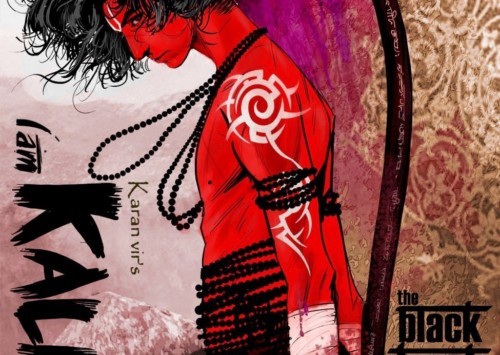A peek into the business of comic culture in India
Amidst other ways to reach out, comic books/ e-books and comic strips are an attractive option for advertisers. Despite the fairly low circulation and readership of comic books in India, more advertisers are hopping on to the bandwagon. However, for the Indian comic publishers and merchandisers, it isn’t an easy journey.
If you have grown up in India, Suppandi, Kaalia, and Shikari Shambu, probably swoosh you down the nostalgia lane.
But beyond these classics, comic strips have been surrounding us from everywhere else too. While Amul’s mascot comic strips for years now, have been creating a strong connect beyond advertising, giving witty takes on current happenings; banks, stock exchanges and government campaigns, also couldn’t ignore the power of comics and have been using comic books to promote themselves or to communicate messages.
The idea isn’t new; during World War II a lot of Disney cartoons were used for propaganda, because they were cheap, portable and had inspirational, patriotic stories of good triumphing over evil. Pro-American characters were popularised, particularly Captain America, a superhero whose entire creation was based on aiding the country’s war effort.
According to Salil Kolhe, sales head at TBS Planet Comics, from big film banners to automobile manufacturers, everyone today looks for a comic character to promote their products or at least a comic strip campaign for social media. “We have worked for Ajay Devgn Films and Balaji Motion Pictures to non-profit organisations who wanted to promote using comic means. Comics are one of the best ways to publicise a material because it’s fun and easy, especially to communicate with the new generation,” he shares.
“Everyone wants to go viral on social media and comics work perfectly. Moreover, they are cost effective. What brands want today are not full-fledged comics but a shorter version, social media driven comic content,” says Aniruddho Chakraborty, founder of Chariot Comics.
However, despite potential for growth is significant, the Indian market value for comics is minuscule compared with other developed markets, where Indian comics stand nowhere vis a vis international products by Warner Bros., Disney, and DC comics, amongst others.
Indian comics haven’t faded completely but have been a little nudged out of the way by international content, TV shows, animated movies and online 3D comic strips. There are many in the market, which are inspired by western comics, yet stay true to the Indian ethos, from Indian Gods to superheroes.
“Our comics don’t sell in that volume that we could expect a living out of it. We use our comics as a stepping stone to grasp projects,” shares Abhijeet Kini, an independent comics publisher in India whose comics catalogue include the popular Angry Maushi comic series.
Anindya Roy, founding director of the Delhi Comic Arts Festival (DeCAF) agrees. “Indian comics are not sustainable. They don’t sell that much. I have a publishing house and over a period of time I found that I was not able to sell a lot of comics. There wasn’t a culture that was as excited to consume the comics as we were when it came to producing them. I realised that it is rather difficult to sell more than 1,200 copies of comics or graphic novels at once. My aim is to increase this number and push more Indie comics and graphic novels towards increased circulation,” he tells Media India Group.
One of the reasons why readers do not pick up Indian comics is largely because of the hegemony American comics have all over the world. “He wouldn’t know about Valmiki’s Ramayan or Shaktiman. He’s into Spiderman, Superman, Tintin, and now we have Asterix in Hindi. It is all about what is trending on YouTube and which character is the topic of discussion amongst friends,” says Kalpana Sharma, mother of a six year old and a resident of west Delhi.
“Today, the readership is a lot different. It is primarily on the internet. On the contrary, I remember as kids and even when we were teens, we used to bring home comics on rent during summer vacations and finish them in an hour to get a few more,” she adds.
Retail culture and licensing
“The pop retail culture in India isn’t as strong as in other countries. There is demand but people don’t know where to buy from,” says Siddharth Sood, founder of the Fan Merchandise Store.
Moreover, getting licenses for printing famous characters on products isn’t easy, shares Tanisha Fagwani, founder and director at the EFG Store, that sells at college fests and also through a website, with official licenses for brands like Harry Potter, Fantastic Beasts, Justice League, and was the first to bring official Harry Potter wands to India.
“The licensing industry in India is indeed broken, but it can be fixed if the licensers understand the reality of retailers. But one of the problems is also that licensing is a consumer factor and in India, the consumers are not conscious enough to make a licensed purchase. If we sell something authentic for INR 600-700, they will say “arey Lajpat mein toh 300 ka milta hai” (we get the same for INR 300 in Lajpat market), exclaims Jaineel Aga, CEO and co-founder at Planet Superheroes.

















